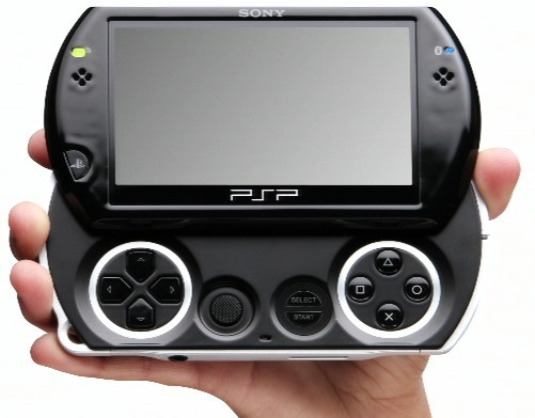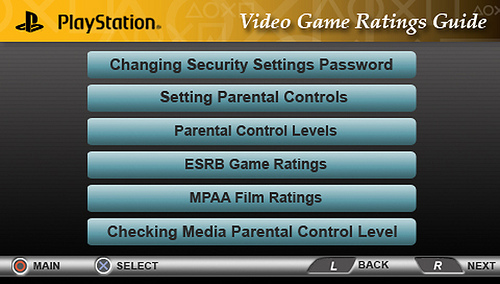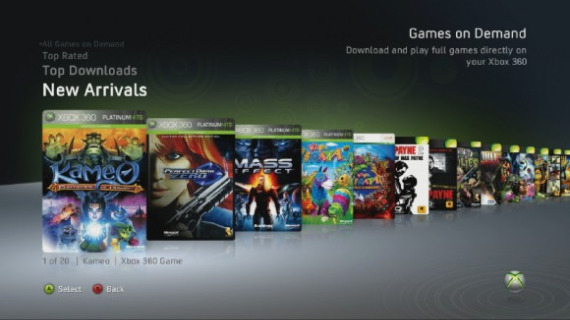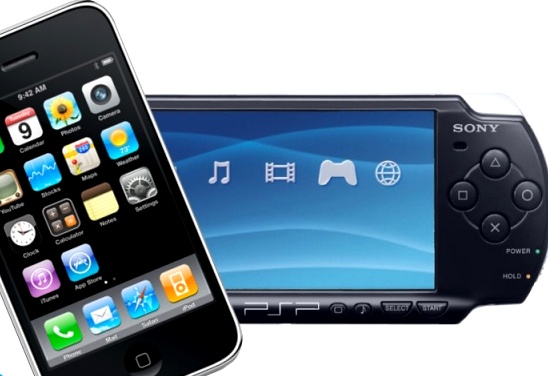That story about the PSP Go being discontinued? It’s true for Asia and Europe, but production will continue in North America.
Tag Archives | PSP Go
Sony in Denial Over PSP Go’s Apparent Demise (Updates)
 (See updates below)
(See updates below)
Looks like the PSP Go is going out with a whimper.
A Sony Shop employee in Japan wrote on his blog that PSP Go production has ceased, according to Andria Sang, a Japanese games industry blog. Also, the Sony Store games page for Japan no longer lists the gaming handheld, and the product page says it’s out of stock. In the United Kingdom, Sony’s store lists the black PSP Go as out of stock, although the white model is still available. A UK retail source told MCV that no further stock will be supplied to the retail channel.
In other words, Sony seems to be letting PSP Go fade away, but the company isn’t ready to admit that the gaming handheld, which relied entirely on downloads instead of physical media, is kaput.
4 comments
PSP Go Gets Price Cut, Still Pricey
 A year after launching the ambitious but unsuccessful PSP Go, Sony has offered a price cut for the handheld gaming device.
A year after launching the ambitious but unsuccessful PSP Go, Sony has offered a price cut for the handheld gaming device.
The PSP Go now costs $200 instead of $250. That’s still $30 more expensive than the PSP-3000, which could probably use a price cut itself. Given the price of Sony Memory Sticks, the PSP Go no longer seems like a raw deal, but it’s still a tough sell compared to the $150 Nintendo DSi, or even the $229 iPod Touch.
The PSP Go is Sony’s attempt to get away from packaged media, thereby beating the used game market and piracy. Of course, those goals have nothing to do with what consumers want, and the Go’s perks over the PSP-3000 — a smaller, lighter build and and 16 GB of built-in memory — previously weren’t enough to justify a much higher price tag, lack of support for the physical UMD format and smaller downloadable game library. A $50 price cut might help.
No comments
The PSP Go: Toast?
 Based on some mysterious guesswork, gaming trade publication Gamasutra came up with some grim numbers for Sony’s PSP Go handheld: 6,000 to 10,000 units sold in the United States last month.
Based on some mysterious guesswork, gaming trade publication Gamasutra came up with some grim numbers for Sony’s PSP Go handheld: 6,000 to 10,000 units sold in the United States last month.
Sony has never released any official sales numbers for the PSP Go, a console that’s smaller and lighter than its predecessors and only supports downloaded games. But last week, Japanese industry watchers Media Create said 1,275 PSP Go device were sold in the first week of March. Regardless of the exact number, it’s safe to say the Go isn’t doing well. Gamasutra believes that Sony will launch a next-generation handheld this year and let the Go “experience a slow death at retail.”
That seems to be happening already. I used to see ads for the PSP Go all around Los Angeles, but no more. And the Go is conspicuously absent from Sony’s announcement of an upcoming PSP bundle for Metal Gear Solid: Peace Walker. You won’t see much love for the Go at GameStop’s Web site or stores, either. A rumor from February held that Sony was going to relaunch the Go with a reduced price, but so far, nothing.
I believe the PSP Go’s commercial troubles are due to several errors on Sony’s part, rather than one major problem. The $250 price point is hard to justify when the $170 PSP-3000 has all the same features, albeit in a larger size. Existing PSP owners were alienated because they couldn’t transfer their UMD games onto the device. Bad reviews didn’t help — those from Ars Technica’s Ben Kuchera and Destructoid’s lovably-vulgar Jim Sterling stuck in my head for noting how unfriendly the device was to its users.
But while it’s tempting to knock the PSP Go’s underlying concept — a download-only handheld that precludes people from buying and selling used games — I don’t think Sony was wrong to pursue it. Apple proved with the iPod Touch that a download-only device can find commercial success. Sony just erred on the execution, not on the idea.
7 comments
Sony: No UMD Transfers for PSP Go
 Those who want in on Sony’s download-only PSP Go will have to leave their disc-based games behind, as there won’t be any way to convert games from UMD to digital form.
Those who want in on Sony’s download-only PSP Go will have to leave their disc-based games behind, as there won’t be any way to convert games from UMD to digital form.
Delivering the bad news to Kotaku, Sony said that “due to legal and technical reasons we will not be offering the program at this time.” Sony didn’t elaborate on its reasons, but I can take a crack at it:
When Sony announced the PSP Go at E3 this year, John Koller, Sony’s hardware marketing director, said that a “good will program” to convert UMDs would be announced soon. There was speculation that retailers would convert UMD games through kiosks at their stores.
That sounds good in theory, but in practice it’s a nightmare. If a store such as Gamestop kept the UMDs after every conversion, it wouldn’t take long before stores become overwhelmed with used PSP games. The value of those games would plummet, forcing Gamestop to lower its prices, which I’m sure it doesn’t want to do.
Then, there are the game publishers, who’d have to agree on letting their UMD-based games get copied into digital form. That’s messy enough from a legal standpoint, but it has no benefits as a business proposition. Unless Sony planned to pay publishers for their cooperation, digital conversion would only amount to a lost sale, with retailers selling the used UMD copies instead of new ones (at greatly reduced prices, mind you).
In the end, I doubt there was enough “good will” from all parties involved to push a conversion program through. I’m reminded of how Sony once promised that the Playstation 3 would be backwards compatible with Playstation 2 games, only to have that support erode steadily over the years.
Adding insult to injury for U.S. customers, there’s a rewards program in Europe where existing PSP owners will get three free games for buying and registering their PSP Go. That program won’t come stateside, as a Sony representative explained that the U.S. has a “dual platform strategy.” In other words, don’t upgrade.
8 comments
Good: ESRB Pre-Loads PSP Go With a Ratings Guide
 Let’s just assume for a minute that it’s an ideal world, where parents keep a watchful eye on the video games their kids are playing.
Let’s just assume for a minute that it’s an ideal world, where parents keep a watchful eye on the video games their kids are playing.
If that’s the case, it’s great news that Sony plans to load a video game ratings guide directly onto the PSP, through a partnership with the Entertainment Software Ratings Board.
The guide explains the meaning behind ESRB ratings, along with movie ratings from the MPAA. It also provides a walkthrough for setting up parental controls on the PSP Go.
While it’d be great to see this functionality on all gaming consoles, it’s especially important to the PSP Go. The handheld gaming device, coming October 1, doesn’t support physical media, so every bit of content is downloaded directly onto the console.
That means no game boxes, unless you plan to buy download vouchers from Gamestop. While resources such as WhatTheyPlay, Gaming With Children and the ESRB’s own Web site are already available to parents who actively get involved with their kids’ gaming, the rating on the box remains the most convenient way of knowing what games are appropriate.
Packing a ratings guide onto the PSP Go isn’t just useful to parents, it’s a clever move by the games industry to head off inevitable criticism. Once politicians and other video game alarmists realize the box has gone away, they’ll target the PSP Go for providing easy access to explicit materials. When that happens, Sony and the ESRB can point to this ratings guide and say they did the best they could.
3 comments
PSP Go Retailer Backlash Begins
 When the PSP Go launches next month, the Netherlands’ largest video game retailer won’t be selling it, according to Eurogamer.
When the PSP Go launches next month, the Netherlands’ largest video game retailer won’t be selling it, according to Eurogamer.
Nedgame says the biggest reason it won’t carry the PSP Go is the price of 249 euros ($250 in the United States), which isn’t justifiable when the existing PSP-3000 costs 169 euros ($130 here). The retailer also knocked the PSP Go’s smaller screen size, at 3.8 inches compared to 4.3 inches.
But there’s another, more obvious reason behind the decision. Because the PSP Go has no optical media slot and the games are download-only, Nedgame would essentially be digging its own grave by selling the handheld. Sure, the retailer could sell game vouchers, as GameStop does with the download-only Patapon 2, but no physical media means no used game sales. I’m not familiar with Nedgame, but at least in the United States, used games generate monster profits for Gamestop.
Meanwhile, Eurogamer’s Spanish-language Web site is reporting a rumor that several retailers in Spain won’t support the PSP Go for similar reasons.
GameStop is selling pre-orders for the PSP Go, so it seems the retailer is willing to support it. However, after the handheld launches on October 1, it should be interesting to see how well GameStop promotes the PSP Go, and how the retailer treats downloadable titles. We could see more incentives for buying games in the store, such as the early demos offered for Patapon 2. I’d like to see frequent buyer discounts and some way to let shoppers come in, try the title out and then buy it using an in-store kiosk.
Whatever happens, I don’t think banning the PSP Go from store shelves is a good idea. Customers who want it will ultimately find a way, and retailers will have burned bridges.
5 comments
Reimagining the Future of Digital Games Distribution
 With Sony launching the download-only PSP Go next month and Microsoft recently launching premium game downloads over Xbox Live, the seeds are planted for a fully digital future.
With Sony launching the download-only PSP Go next month and Microsoft recently launching premium game downloads over Xbox Live, the seeds are planted for a fully digital future.
For the most part, I’ve viewed this as a good thing, but an editorial by Jim Sterling at Destructoid today gave me pause. Entitled “Fearing the future of digital distribution,” Sterling argues that digital distribution, for all its convenience, will come at a price. Game publishers will dominate the marketplace, Sterling writes, offering no refunds, no used game sales and “no accountability whatsoever,” merely because they can. I disagree.
The current behavior of Microsoft and Sony make for inviting red flags in Sterling’s argument. The Xbox 360’s Games on Demand — downloadable games that also sell at retail — are often more expensive to download than they are on disc. And Sony will sell downloadable PSP games that cost more than their boxed counterparts. “The games industry will set its own price at whim, and without any more alternatives, consumers will have no choice but to pay whatever they’re told to pay or simply stop buying games altogether,” Sterling writes.
The problem with this is that it’s based on limited examples. Though Sterling acknowledges that doom-and-gloom is only one possible outcome, it’s hardly the most likely.
Downloads won’t dominate unless consumers endorse the idea, and that requires incentives. Without a reason to go digital — for instance, better value over a hard copy, or rewards for loyalty — consumers will stick with Gamestop. Publishers, in turn, won’t fully commit to digital because there’s no market for it.
Even if console makers slowly grab more market share with downloads, to the point that physical media is out of the equation, it won’t mean the end of competition. In fact, it’ll create more of it. I see a future where a gaming console isn’t only about the best graphics and most exclusive games, but how much value exists in the digital marketplace.
The store that treats its customers the best and offers the most incentive to shop will prosper, while the oppressor will find a smaller audience overall. That’s nothing to be afraid of.
2 comments
Yes, Sony, You Are Competing With the iPhone
 Sony continues to insist that it’s not competing with the iPhone on gaming, even though the opposite is increasingly becoming true.
Sony continues to insist that it’s not competing with the iPhone on gaming, even though the opposite is increasingly becoming true.
Tucked into Sony’s impressively newsworthy GamesCom press conference yesterday was an announcement for “PSP Minis,” a line of low-price, small-scale video games aimed at the upcoming PSP Go handheld. The list of planned games, including Air Hockey, Bowling and Pac-Man Championship Edition, sound a lot like what you’d find in the iPhone’s App Store.
This is a major about-face for Sony. In March, the company’s marketing VP Peter Dille derided the iPhone as a “separate business” that hosts “largely diversionary” games. He further explained that Sony is a gaming company that makes handheld games with 20-hour experiences. I guess Sony realized there’s also room for cheap and simple.
Still, the company won’t admit that it’s taking Apple on with PSP Minis. Here’s Gamasutra’s Leigh Alexander on follow-up with Playstation Network operations director Eric Lempel, who says Sony isn’t after Apple’s market share.
“It’s totally different,” Lempel told Gamasutra. “… It’s not open to users; these are professional developers, it’s not like what you’re seeing on that other platform.”
Someone needs to remind Sony’s handlers that “competition” doesn’t mean “approaching the market in the exact same way, warts and all.” This should be an opportunity for Sony to say “Yes, we are competing with Apple for handheld gamers’ money, and here’s how we’re going to take it.” Instead, Lempel seems unwilling to confront the truth head-on.
21 comments
PSP Go Could Run Faster
 Sony won’t tell you this up front, but it seems the PSP Go will carry a faster processor than the existing PSP-3000.
Sony won’t tell you this up front, but it seems the PSP Go will carry a faster processor than the existing PSP-3000.
That’s at least according to FCC filings dug up by Sony Insider. The portable gaming device, which is due in October and will get all of its content through Internet downloads, will include a 480 MHz clock frequency, compared to 333 MHz in the PSP-3000. Sony hasn’t commented on the discovery — enjoying the holiday, perhaps.
Now, this doesn’t mean that the PSP Go will run faster all the time, if at all. The original PSP was bound to 222 MHz until a firmware update unleashed its full potential, Sony Insider notes. We could be looking at a similar situation with the PSP Go, where users would have more power at their disposal down the line.
That’s still an interesting scenario, because it could lead to exclusive games or other content for the new device. Then again, Sony’s Kaz Hirai said at E3 that “the PSP Go will not replace the PSP-3000 or the UMD,” adding that both models would support the same games.
Another possibility would allow the PSP Go to tap a little extra power for the most demanding games, even if they’re designed for both devices. We could also be looking at support for applications (i.e., not video games) that take advantage of the superior hardware.
In any case, the news suggests that the PSP Go and the PSP-3000 aren’t equals, as Sony has worked hard to suggest. More than just a design upgrade with downloads instead of discs, it looks like the PSP Go has a performance advantage as well.
